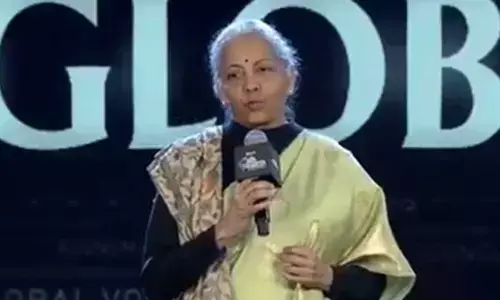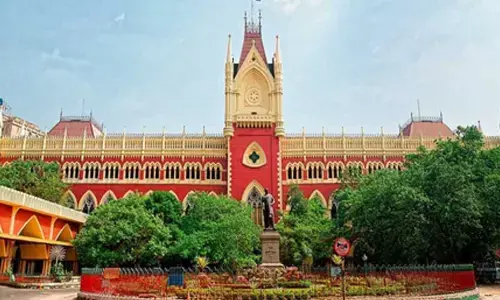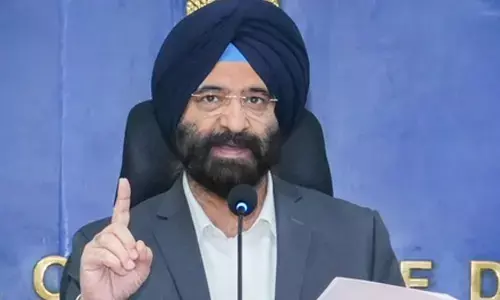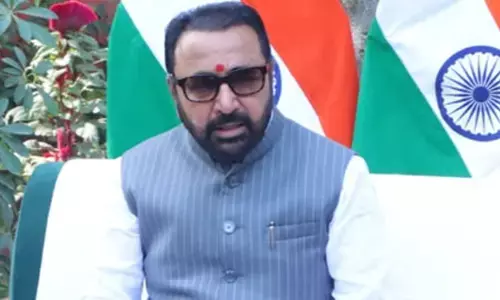Sankranti Sambaralu: The 3-day festivities begin in the Two Telugu States

Makar refers to Zodiac, Capricon and Sankranti means Transition. Also called Makar in Sanskrit. The festival 'Sankranti' celebrates the Sun's shift into Capricorn.
Makar refers to Zodiac, Capricon and Sankranti means Transition. Also called Makar in Sanskrit. The festival 'Sankranti' celebrates the Sun's shift into Capricorn. On Makar Sankranti, the Sun enters the new zodiac-sign of Capricorn or Makara. Most Hindu festivals are based on the lunar calendar, making the dates of festivals change every year. But Makar Sankranti is a festival that falls on the same day every year as it follows the solar calendar. As Makar Sankranti is one of the oldest solstice festivals and falls on the equinox, day and night on this day are believed to be equally long. Post the festival, it is officially the beginning of spring. Indian summer and the days become longer, and nights shorter. The festival highlights the importance of pulling back from unethical and unhealthy behaviors while practicing for peaceful and positive ones instead.
Makara Sankranthi is celebrated for three consecutive days. The first day is Bhogi. In North India, it is known as Lohri. The second day is Sankranthi which is dedicated to worshipping Lord Surya (the Sun god), Varuna (the rain god) and Indra (king of gods). The third day is Kanuma which is dedicated to cleaning cows, farm animals, and farm equipment and offering prayers to them for helping with a successful harvest season ahead.
Bhogi day starts with Bhogi mantalu (Bonfire) in the early hours of the morning. People light a bonfire, They offer prayers to fire god discarding outdated things and ideas and welcome new things and new ideas to prosper... The disposal of discarded things symbolizes the sacrifice of old habits, vices, and attachment to material things.
In the evening Bommala Koluvu (arrangement of images of Gods, toys, and dolls) is arranged at homes.
The second day is the main festival – Sankranthi. The second day is for Sun's way into Uttarayana or Northern Hemisphere which is celebrated as Makara Sankranti. People express gratitude and appreciation to the Hindu gods varunudu (god of rain), Indra (king of gods) responsible for an ample amount of rainfall, plenty of harvest, wealth and prosperity. 'Nadaswaram' is played, to welcome Makara Sankranti, the onset of 'Uttarayana Punyakalam' when the Sun makes its journey to the Northern hemisphere from Makara Rasi.
The second day, Pedda Panduga is the Sankranti day when the big festival is held. People are dressed in new clothes and pray to God. There are also feasts arranged for the guests. Cockfighting was a favorite game during the Makara Sankranti, but it is now banned in Andhra Pradesh. On the third day, the Kanuma Panduga is the day for having meat after the excessive sweets.
These three days the streets in South India look amazingly colorful with different designs of rangolis. Rangoli (Kolam, muggu) is an art of drawing with dots using dry rice flour. Women wake up early in the morning to decorate their courtyards. Neighbors and friends compete with each other in decorating the entrance with attractive rangoli and placing 'gobbemmalu' (small cow dung balls with flowers placed in the center) as per tradition. Apart from households, rangoli is also made outside shops and offices. Drawing kolam is considered auspicious. Several types of muggu designs are popular for Pongal. Apart from drawing lines, people also make twisted chains by linking one loop of the rangoli with the next, thereby forming wonderful designs. The art is also popular in other states, where it is known by different names. In Bengal, it is known as Alpana, while in Rajasthan, it is known by the name 'Mandana'. People in Andhra Pradesh call it 'Muggulu', while in Maharashtra and Karnataka it is called 'Rangoli'.
Sweets called nuvvula laddu, sakinalu, 'ariselu' and 'bobattlu' are made and offered to family and extended families. Pongal made of fresh harvest rice and jaggery is made. For this reason, in Tamilnadu, it is called Pongal. Since Sankranti falls in winter, consuming sesame seeds mixed in jaggery is beneficial to keep body warm. Eating sesame and jaggery is believed to take away the bad elements from the minds and hearts of people. Sesame helps retain the Shakti (Divine Energy) and Chaitanya. It is known to eliminate sins if used in drinking water, bathing, applying til oil on the body and other uses. It is said sesame seeds have a greater ability to absorb and emit sattva (One of the three components in the universe, signified by purity and knowledge) frequencies.
The third day is Kanuma Panduga is basically known as Mukkanuma in Telugu, Mattu Pongal in Tamil is an event of praying and showcasing their cattle with honor. In the olden days, Cattles are a sign of prosperity. Some of the reasons are using bulls for the plough, using cow dung to build houses, used dung as a coating on walls every year and production of milk.
Families gather during the Sankranti event and specifically, sons-in-law holiday with their wives ' families.
The most eye-catching feature of Kanuma is the procession of colorfully decorated bulls in the streets with sannai or nadaswaram music. 'Gangireddu' is a colorfully decorated process in the village by its master who plays the 'Nadaswaram' during Sankranti. Bulls are trained to nod 'Yes' and 'No', kneel and dance by 'Yadava' sect. The Gangireddu earn money, clothes, and grains in return for the performance. Sankranthi is such a gaiety festival where families unite. Children fly kites. The streets are all colorful.















